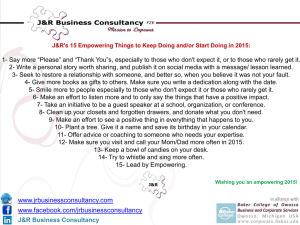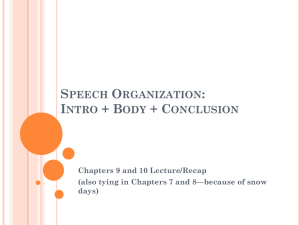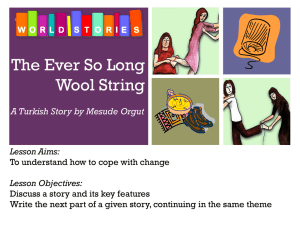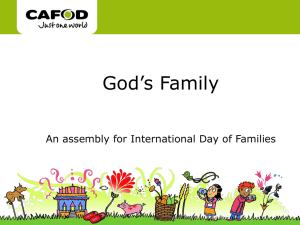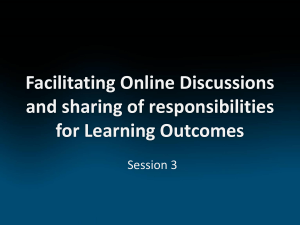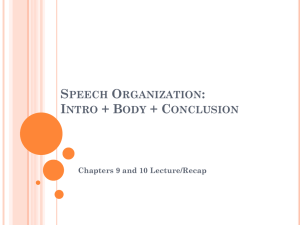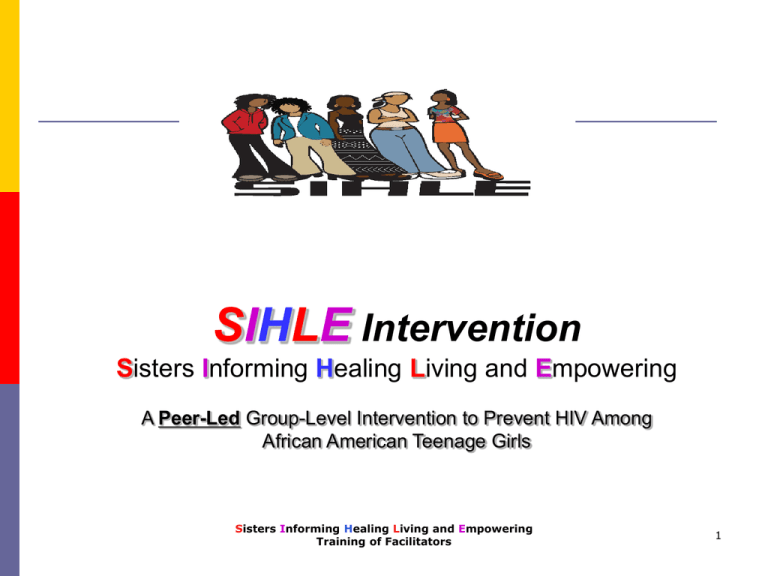
SIHLE Intervention
Sisters Informing Healing Living and Empowering
A Peer-Led Group-Level Intervention to Prevent HIV Among
African American Teenage Girls
Sisters Informing Healing Living and Empowering
Training of Facilitators
1
SIHLE Background
(pronounced see•lay)
SIHLE:
Sisters Informing Healing Living and Empowering
Origin:
Adolescent version of SISTA
Developers:
Drs. Ralph J. DiClemente & Gina M. Wingood
Population:
522 African American teens 14 -18 years living in Alabama
Intervention:
4 sessions, 3-hours each, conducted with 10 -12 African
American female teens.
Co-facilitators:
Two peers and one adult facilitator
Results:
Consistent condom use, increased HIV/AIDS knowledge,
enhanced self efficacy, intention to use condoms, reduced STDs
Sisters Informing Healing Living and Empowering
Training of Facilitators
2
SIHLE Background
The four weekly, 3-hour sessions emphasize:
Session 1:
Gender and Ethnic Pride
Session 2:
STD/HIV Risk-Reduction Knowledge
Session 3:
Sexual Communication Skills and
Safer Sex Skills
Session 4:
Healthy Relationships
Sisters Informing Healing Living and Empowering
Training of Facilitators
3
Social Cognitive Theory
According to Social Cognitive Theory:
♦ A person’s physical and social environments reinforce
and shape her ability to change her behavior.
♦ A person learns from watching people, who have some
influence on them, model or perform behaviors.
♦ A person’s belief that she is capable of performing the
new behavior (i.e., self-efficacy) makes it more likely that
she will adopt the new behavior.
Sisters Informing Healing Living and Empowering
Training of Facilitators
4
Social Cognitive Theory
To reduce HIV-related behaviors people need:
♦ Information
about HIV/AIDS risk-reduction
strategies
♦ Training
in social and behavioral skills (e.g.
condom use skills, communication
skills, and refusal skills)
♦ Knowledge
of peer norms to support HIV/AIDS
risk-reduction strategies
♦ Self Efficacy
confidence that they can perform the
new behavior
Sisters Informing Healing Living and Empowering
Training of Facilitators
5
Theory of Gender and Power
Three power structures enhance women’s vulnerability
compared to men’s with respect to their health.
1.
Division of Labor
2.
Division of Power
3.
Structure of Norms and Affective Relationships
Sisters Informing Healing Living and Empowering
Training of Facilitators
6
Theory of Gender and Power
Embedded in these structures are gender-based
inequalities and stereotypes of how women should act:
1.
Division of Labor: manifested as inequalities for
women relegated to doing “women’s work,” they are
paid less for their work and often have to depend on
men for money
2.
Division of Power: evident in women having less
power in relationships and being depicted negatively in
society (stereotypical images in media)
3.
Structure of Norms and Affective Relationships:
evident in norms supportive of women being passive,
naive, and continuously pleasing men in relationships
Sisters Informing Healing Living and Empowering
Training of Facilitators
7
Theory of Gender and Power
Applying the Theory of Gender and Power to understand
African American female teens’ vulnerability to HIV/AIDS:
1. Division of Labor
- having an older male partner
2.
Division of Power
- having violent dating partners
- being stereotyped by the media
3.
Structure of Norms and Affective Relationships
- experiencing peer pressure to have sex
- communicating nonassertively
- engaging inSisters
serial
monogamy
Informing Healing Living and Empowering
Training of Facilitators
8
What are Core Elements?
♦
Characteristics of an intervention’s intent and design
that are critical to the replication of research results
♦
Features thought to be responsible for an
intervention’s effectiveness
♦
Features that must be maintained without alteration
to ensure intervention effectiveness in order to
maintain fidelity to the original study
♦
Concepts that are a practical extension of the
theories on which the intervention is based
Sisters Informing Healing Living and Empowering
Training of Facilitators
9
SIHLE Core Elements
1.
Conduct small-group sessions that meet session goals.
2.
Implement SIHLE with female teens who have had sexual
intercourse and are between the ages of 14 and18
(inclusive).
3.
Use one adult, and two peer (ages 18-21) female facilitators
who are knowledgeable about youth subculture to
implement SIHLE group sessions. Facilitators must
possess group facilitation skills and a comprehensive
knowledge of the intervention. Mastering co-facilitation is
critical to implementation.
Sisters Informing Healing Living and Empowering
Training of Facilitators
10
SIHLE Core Elements
4.
Use materials that are age, gender, and culturally
appropriate to motivate gender and ethnic pride and to
maintain teens’ interest throughout the sessions.
5.
Train teens in assertive communication skills to
demonstrate care for their partners and to negotiate
abstinence or safer sex behaviors.
6.
Teach teens proper condom use; SIHLE is designed to
foster positive attitudes and norms toward consistent
condom use and to provide teens with the appropriate
instruction for placing condoms on their partner.
Sisters Informing Healing Living and Empowering
Training of Facilitators
11
SIHLE Core Elements
7.
Discuss triggers that make negotiating safer sex for
teens challenging.
8.
Emphasize the importance of partner involvement in
safer sex; the homework activities are designed to
involve the male partner.
9.
Deliver intervention to teens in community-based
settings, not in a school-based setting or during school
hours.
Sisters Informing Healing Living and Empowering
Training of Facilitators
12
SIHLE Key Characteristics
1.
Include between 10 to 12 African American female
teens in the intervention.
2.
New members should not join once the series of
sessions has begun.
3.
Each session should last approximately 3 hours.
4.
SIHLE can be adapted for different groups of African
American, female teens.
Sisters Informing Healing Living and Empowering
Training of Facilitators
13
SIHLE Key Characteristics
5.
SIHLE must be implemented with passion, and with
high-energy and a charismatic approach to session
implementation.
6.
SIHLE should be publicized as a program that was
developed by African American females for African
American females.
7.
SIHLE should include HIV/AIDS prevention
discussions that address relationships, dating, and
sexual health within the context of female African
American teenage
experiences.
Sisters Informing Healing Living and Empowering
Training of Facilitators
14
The SIHLE Logic Model
Theoretical Foundation
Intervention Activities
Behavioral Determinants
Risk Behaviors
Outcomes
Sisters Informing Healing Living and Empowering
Training of Facilitators
15
The SIHLE Logic Model
Theoretical Foundation
Social Cognitive Theory (SCT) & Theory of Gender and Power (TGP)
Provide peer support and influence (social support from teens)
Provide knowledge/information about sexual risk-reduction practices
Discuss positive outcomes of abstaining and reducing risky sex
Provide opportunities for decision making, problem solving, and goal
setting
Demonstrate proper condom use and communication skills
Allow opportunity for participants to role play condom use and
communication skills to enhance self-efficacy
Practice condom use and communication skills in emotionally arousing
situations (i.e., older partner)
Discuss “triggers” that make it challenging to practice safer sex
Enhance self-worth in being an African American female teen
Sisters Informing Healing Living and Empowering
Training of Facilitators
16
The SIHLE Logic Model
Intervention Activities: Small group discussions among African
American adolescent females which include:
•Information on HIV/AIDS highlighting African American adolescent
females’ HIV risk
•Modeling decision making, problem solving, and goal setting
•Modeling, role playing, and practicing refusing sex, negotiating safer
sex, and communicating assertively
•Discussion of gender norms and dating violence in adolescent
heterosexual relationships and its impact on adolescent females’
ability to negotiate risk reduction
•Fostering gender/ethnic pride via music videos, crafts, identification
of African American female role models
•Using skilled African American female adult and peer facilitators to
co-facilitate implementing the intervention
Sisters Informing Healing Living and Empowering
Training of Facilitators
17
The SIHLE Logic Model
Behavioral Determinants of Risk
● Inadequate skills to use condoms
● Inadequate skills to negotiate
abstaining from sex and riskreduction
● Lack of knowledge about HIV/AIDS
transmission, personal risks, and
safer sex
● Lack of knowledge about power
imbalances in adolescent
heterosexual relationships
● Gender norms and peer pressure
impacting female adolescents’
ability to practice risk-reduction
Sisters Informing Healing Living and Empowering
Training of Facilitators
Risk
Behaviors
No condom
use or
inconsistent
condom use
18
The SIHLE Logic Model
Outcomes
●
Increased knowledge about HIV transmission and
risk-reduction strategies
●
Intention to use condoms or risk-reduction
strategies
●
Enhanced self-efficacy for negotiation and use of
condoms and risk-reduction strategies
●
Consistent condom use and other risk-reduction
strategies
Sisters Informing Healing Living and Empowering
Training of Facilitators
19
Culture,
Cultural Competence
and
Adolescent Development
Sisters Informing Healing Living and Empowering
Training of Facilitators
20
Culture is…
“Culture refers to integrated patterns of human
behavior that includes the language, thoughts,
communications, actions, customs, beliefs,
values, and institutions of racial, ethnic,
religious, or social groups.”
(National Prevention Information Network, 2007)
Sisters Informing Healing Living and Empowering
Training of Facilitators
21
Cultural competence is…
Sisters Informing Healing Living and Empowering
Training of Facilitators
22
Cultural competence is…
“Having the capacity to function effectively as an
individual and an organization within the context
of the cultural beliefs, behaviors, and needs
presented by consumers and their
communities.”
(National Prevention Information Network, 2007)
Sisters Informing Healing Living and Empowering
Training of Facilitators
23
Youth Subculture
A culture based on youth experiences that is distinct in styles, behaviors, and
interests.
For African American youth- this practice may often serve as a means of
adjusting to society’s perspective of minority youth.
May be indicated tangibly: clothing types, colors and styles, hair cuts and
hairstyles, footwear, behaviors (greetings, dance, etc) and dialects and slang.
May be indicated intangibly: common interests, perspectives, music genres and
gathering places can also be important factors.
Having their own subculture provides youth with identities that are typically
outside of what is ascribed by social institutions such as church, family, work,
home and school.
Sisters Informing Healing Living and Empowering
Training of Facilitators
24
Adolescent Development
♦ Adolescence- a developmental stage, occurring
from ages 11 to 21, marks a child’s transition to
young adulthood.
Two key terms:
♦
Puberty– external development of adult
sexual
characteristics (breasts, menstrual
periods, pubic and facial hair)
♦
Adolescence– internal and behavioral changes
that result from the onset of puberty
Sisters Informing Healing Living and Empowering
Training of Facilitators
25
Adolescent Development
Adolescent development occurs:
Externally (physical and social processes)
Internally (emotional and cognitive processes)
♦ Key areas of growth:
Physical– growth in body size and characteristics
Mental– cognitive processes including planning,
reasoning, decision making
Social– networks, communities, sources of
influence
Sisters Informing Healing Living and Empowering
Training of Facilitators
26
Adolescent Development
♦
Key social tasks:
Establish
the following:
An identity
Autonomy
Intimacy
A level of comfort with their own
sexuality
A sense of morality and values
Sisters Informing Healing Living and Empowering
Training of Facilitators
27
SIHLE and Adolescent
Development
♦ Adolescence is a critical age for risk taking. As
adolescents move toward independence, they tend to
experiment and test limits, practice risky behaviors linked
with sex, drugs and alcohol.
♦ SIHLE focuses these issues through the key activities
that are designed to address the different stages of
development that 14 to18 year olds will be experiencing
♦ Facilitation of these SIHLE activities with this knowledge
in mind is key to its successful implementation
Sisters Informing Healing Living and Empowering
Training of Facilitators
28
Sisters Informing Healing Living and Empowering
Training of Facilitators
29
THANK YOU!
Sisters Informing Healing Living and Empowering
Training of Facilitators
30

